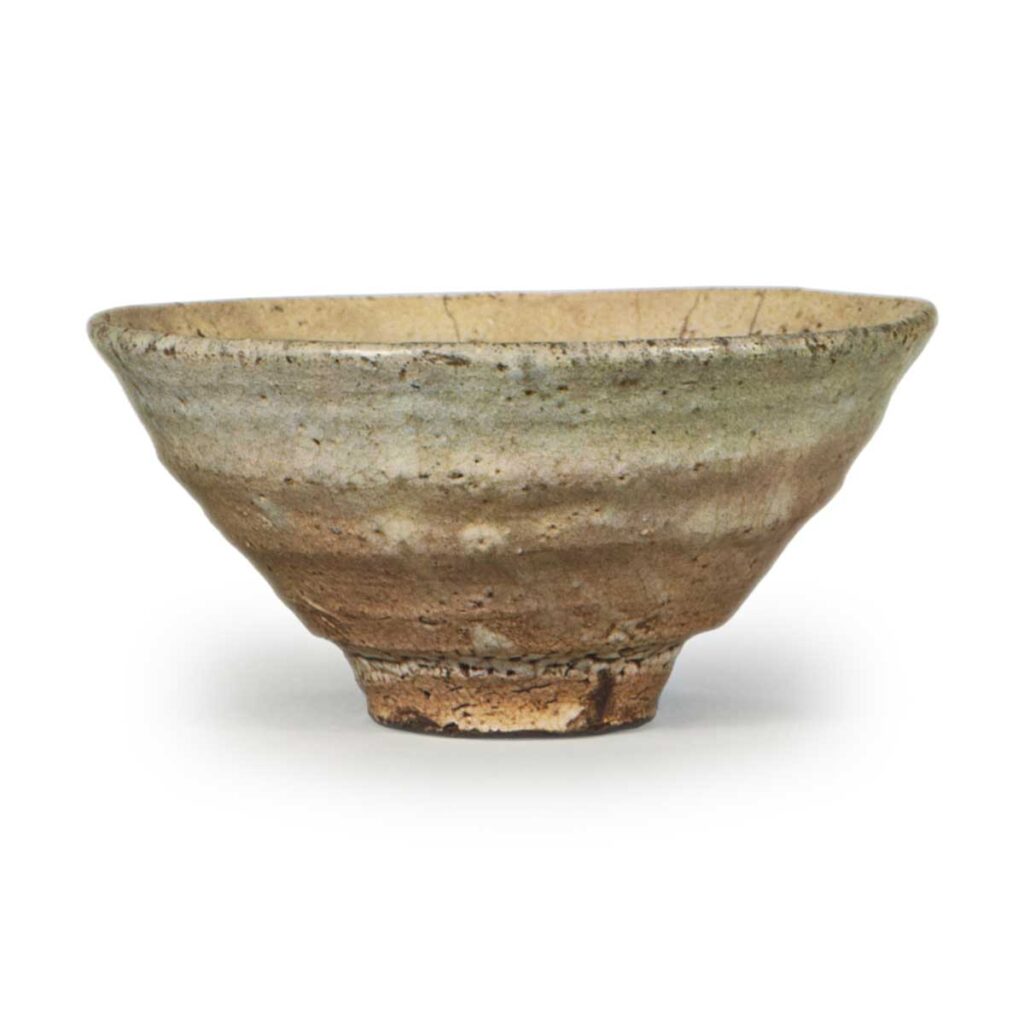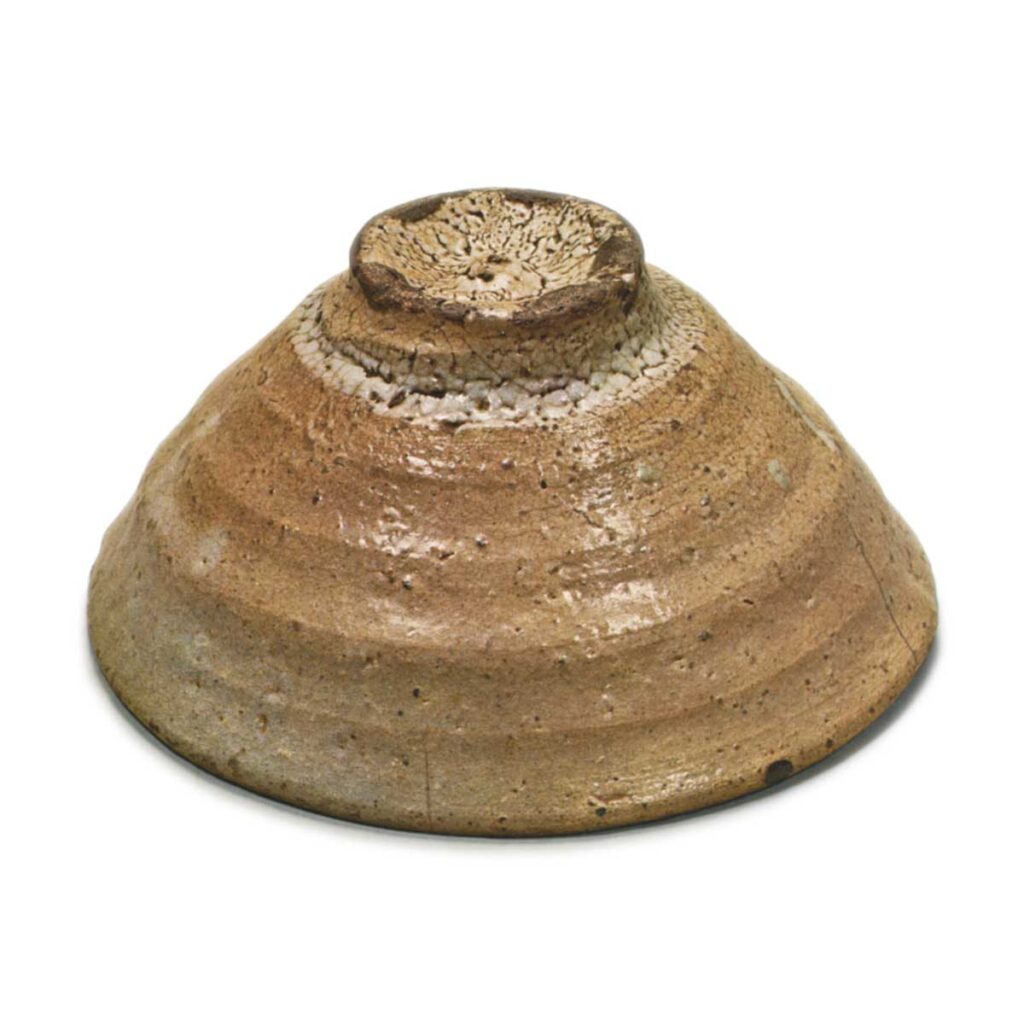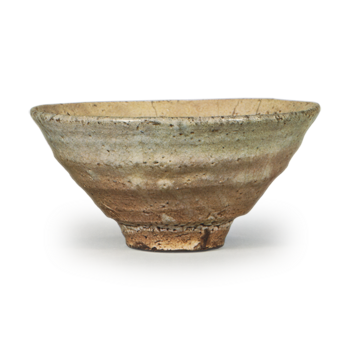

Important Cultural Property
Important Cultural Property
Collection: Nezu Museum
Height: 7.1cm
Bowl diameter: 4.3cm
Outer diameter of base: 4.8cm
Height: 1.8cm
Aoi-do potteries are usually thick and heavy, as they are considered to be inferior to the other types of well-shaped potteries. Shibata wells are representative of this type of work.
The first thing that attracts people to Shibata is its exhilarating shape. The small size of the well has a powerful four-step wheel-thrown pattern, which, combined with the bamboo joints at the bottom of the well, creates a strong rhythm from top to bottom, almost as if it were reaching a point at one moment.
The reason why the wheel-thrown four-step is considered to be the most important feature of wells is, of course, based on the comfort of its rough and vigorous rhythm in terms of appearance and feel. The amount of wheel throwing is also related to the speed of turning, and the rougher the wheel, the faster the speed and therefore the stronger the sense of power, which is also a hidden element of beauty. A well with too much wheel throwing is dull and weak, and has no flavor.
In the case of Shibata, the rough wheel throwing on the small size of the potter’s wheel is strong and conspicuous, and its smallness is twice or three times more effective than that of large wells.
The glaze surface is also excellent, with a bright loquat color, and some glaze pools have a whitish tinge. Aoide, as its name implies, is characterized by a duller glaze tone due to the iron content of the base material, but on rare occasions, as in Shibata, the loquat color is as beautiful as that of Oido’s famous wares. This is one of the highlights of Shibata. However, the glaze tone of Aoido is softer than that of Oido, and the hand-tooling is more pronounced.
The sharpness of the side cutting on the high stand and the rough umehana bark (kairagi), which attracts people with its snow-white beauty, are also highlights that should not be missed. The kabukin (helmet) stands well within the takadai, and the kairagi is also superb.
There are five eyes on the front, and the center of the tea bowl is deeply pointed due to the potter’s wheel.
It is rare to find such a bowl as Shibata, which has all the good qualities and does not fall into the small taste, yet is elegant and allows us to enjoy the real pleasure of well-made tea bowls. It is not only one of the best Korean or Tang Dynasty bowls, but also one of the best among many tea bowls.
Inner box, Shunkei lacquer on the front of the lid, “Shibata Ido” in gold powder script
Back of the same lid, inscribed in vermilion Urushi lacquer, “Inherited from Mr. Asahina, an Aoyama vassal in possession of Shibata Repair
Outer box, cover front inscribed by Hirase Shihiro (father of Roka), “Shibata bowl, well
Inscribed on the reverse side of the lid: “Received from Lord Nobunaga, in accordance with Repairman Shibata (Hirase seal)”.
After the death of Nobunaga Shibata, it was handed down to the Asahina clan, a vassal of the Aoyama family, and later entered the Chikusa-ya (Hirase family), a sukiya in Osaka. Later, in 1941, when the Nezu Museum was established, it became a part of the museum’s collection.



